Teaching Offense
Teaching offense to can be a difficult task (especially with younger teams). Coaches often have many different aspects to take into consideration when trying to teach players how to play on the offensive end. Even coaches at the highest level in the NBA can struggle to find the right balance on the offensive end depending on the type of personnel they are given. It can be a tricky task to maximize your players talent, while teaching your players to work together in a cohesive way.
To address youth coaches specifically, I believe that you should desire to accomplish several different things on the offensive end: you want to help their players learn the fundamentals, work together, and make the offensive end of the floor fun.
In my estimation, these offense sets accomplish several different things: they give your team great spacing, they allow every member of the team to touch the ball, and these sets help players learn to make reads depending on where their teammates are how the defense is playing them.When teaching offensive principles here are three key points that I think every coach needs to take into consideration when trying to help young players learn how to play offense the right way.
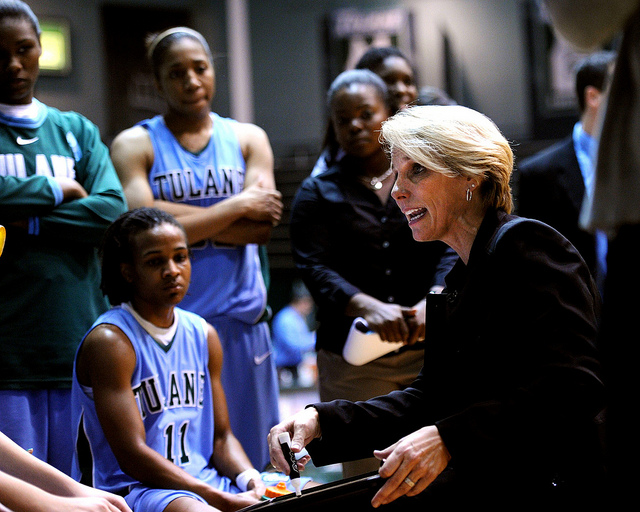
1. The Ball has Energy
This statement has come into vogue in the NBA in the past couple of seasons. Greg Popovich in the Spurs have pioneered the revolution of playing team basketball where everybody touches the ball and everybody's a part of the offense. The idea that the ball has energy simply means that players will play a little bit harder when they touch the ball. They feel a part of the game plan and just touching the ball whether it's on a pass, setting a screen, or just swinging the ball on the perimeter, will help them get into a rhythm. No one likes to just stand in the corner waiting for something to happen.
"When players touch the ball, they become bought into the success of the team because they feel like they are important."
Recently Kyle Korver of the Atlanta Hawks talked about this principle: he said in an interview that the Hawks have used him in a way that he's never been used in his career before. He went on to talk about how many teams often just thought of him as a shooter and would just tell him to stand in the corner. This season they have him moving and touching the ball a lot more on offense. He is searching for his shot which helps him get into a great rhythm and also creates great spacing for his teammates because he such a lethal weapon from the outside.
Recently Kyle Korver of the Atlanta Hawks talked about this principle: he said in an interview that the Hawks have used him in a way that he's never been used in his career before. He went on to talk about how many teams often just thought of him as a shooter and would just tell him to stand in the corner. This season they have him moving and touching the ball a lot more on offense. He is searching for his shot which helps him get into a great rhythm and also creates great spacing for his teammates because he such a lethal weapon from the outside.
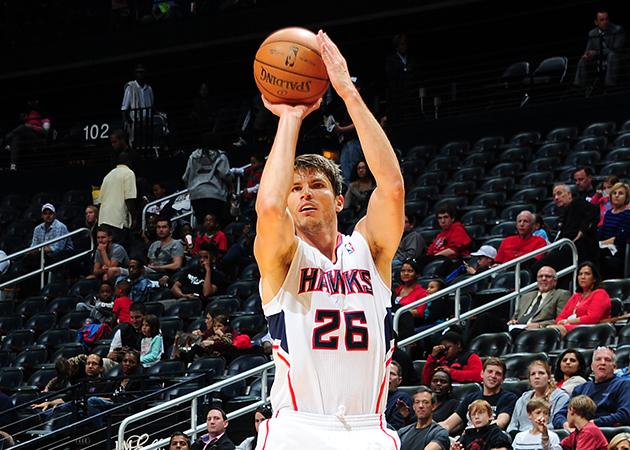
2. Don’t Pigeonhole players
This happens a lot at the youth level and usually it's nobody's fault. Especially when coaches have bigger players they automatically relegate them to standing inside of the paint. The only problem with this is is that young kids often grow at different rates and you never know how tall a kid is going to become. The much more important principle is to help kids develop the skills that are transferable at any position. Regardless of how tall a player becomes or what position they play when they become older, the skills of ball-handling, passing, and shooting our valued at any position in at any level of play.
Find creative ways to help players develop the skills in a game situation. This is not to say that you can't teach post moves or the skills that are required by big men. I only intend to stress the point that basketball players with skills are much more valuable than basketball players without skills. In their long-term development learning these types of skills are much more valuable down the road.
3. Learn to make basketball decisions
How is my defender playing me? Is my teammate getting ready to make a cut? If so how should I space out to help them score more easily? These are the kinds of questions of player should be able to answer you have a good understanding of the game. There also the kind of questions that you have to ask yourself when helping kids learn this offensive set.
It is so easy as a coach of younger players to turn players into robots by controlling their movements on offense. Understandably so, it is often difficult when you have players of different skill levels to get them to make basketball decisions in accord with other teammates. The great youth coaches in my estimation are the ones who give their players a structure in which they learn how to make basketball decisions. This is a difficult and arduous process, but as players develop, one of the greatest skills that you can have is an understanding of the game and how to fit in with teammates.
Conclusion
I think these sets accomplish these three goals. The few options I've given you in these sets are only the tip of the iceberg. One of the greatest things about these sets are that they can be customized in a million different ways depending on your team. My college team use many of these similar movements and I've benefited as a player in learning how to move off the ball and make great reads. I hope that you find them helpful.
4-Corners Set
You start with 4 corners spread typically with two of your guards up top and with your center somewhere in the middle (it usually helps if they start somewhere below the free-throw line so they can break up towards the top of the key and catch the ball around the three-point line). This can also be a great teaching point on how to get open to receive a pass. One of the great things about this set is that the positions are so interchangeable. Also your "Big man” will handle the ball and be able to make decisions to initiate your offense.
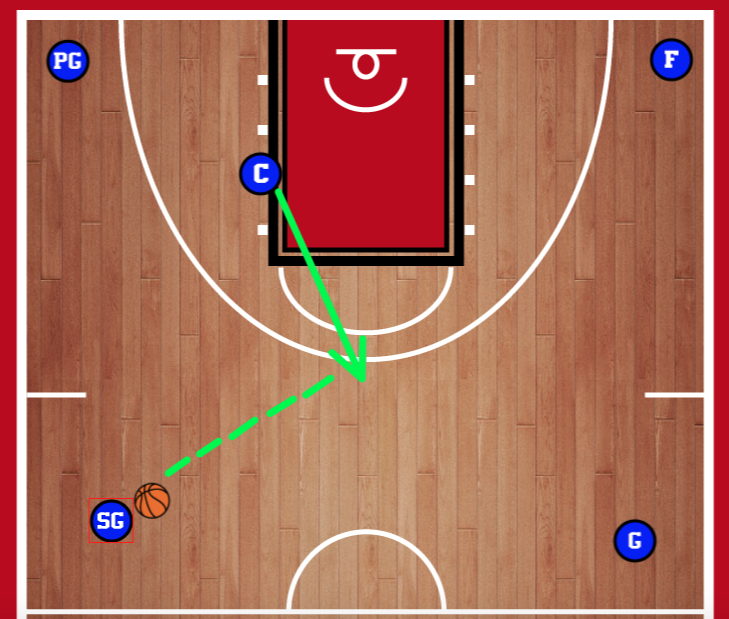
After the center catches the ball in the middle of the floor the two guards will cut down the lane on their respective sides and out to the corner. Meanwhile the two players in the corner will fill to the wings so that now we have five out. From here you really have a ton of different options, which is one of the reasons why I love this set so much. I will walk you through a few of the different options that I think could be good for your team but feel free to experiment with anything that you think you can take advantage of.
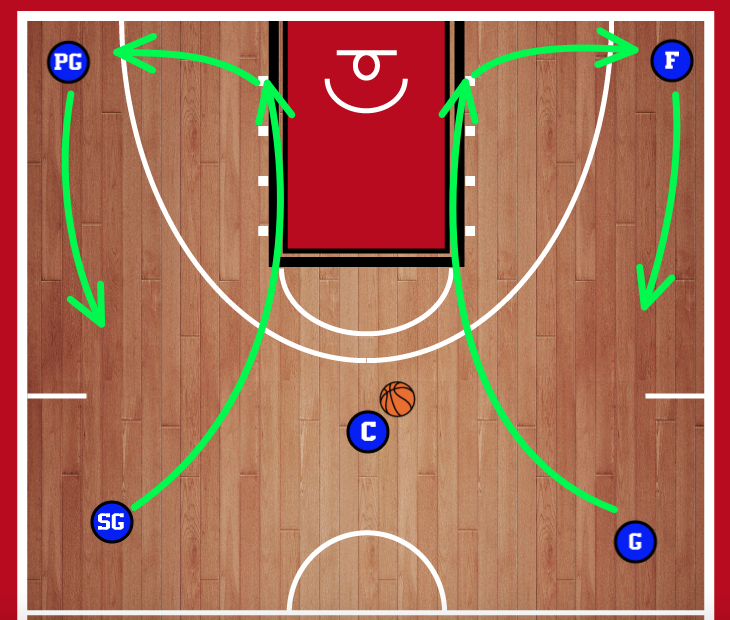
Option 1 - dribble at back door: C can pick a side and will start dribbling at the offense of players defender on the wing. You would be surprised at how many easy layups you can get off the simple action. The key is for the wing player to stay spaced and for the ball handler to dribble at the defender of their teammate.
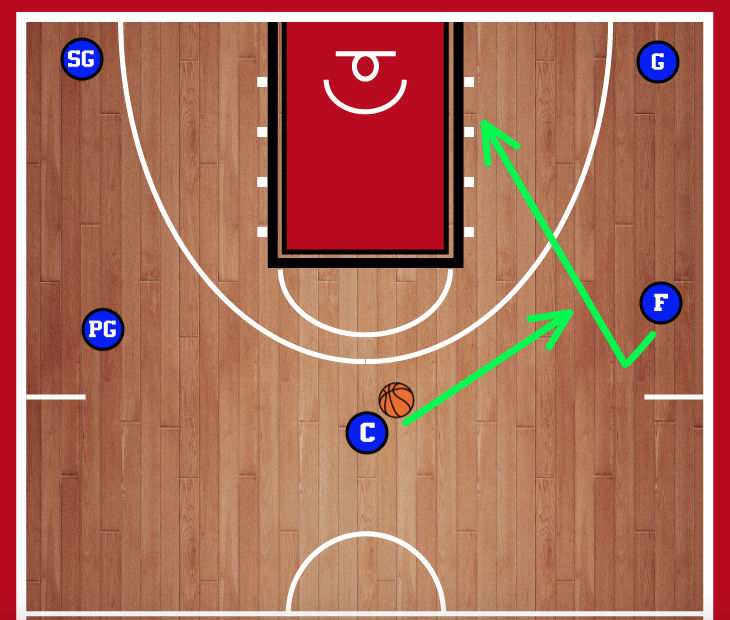
Option 2 - Handoff: now instead of going back door the wing player can set their defender up to receive a handoff. If the defender doesn't know if the offensive player is going to cut back door or receive a handoff this can be a difficult action to defend. Meanwhile on the opposite side the two other players should execute a down screen. This will do two things: it will either distract their defenders giving the wing player an easy path to the rim, or their defenders will give too much help and will give an opening on the opposite side for a shot or a drive.
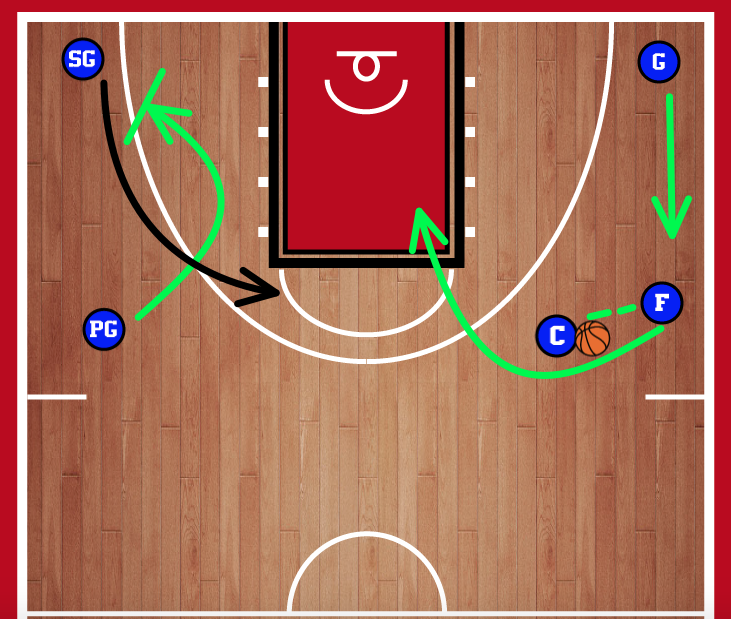
Option 3 - Backdoor + Pick and Roll: if we imagine the wing player has cut back door, the player in the corner can now lift and receive a handoff or get a pass and then execute a pick and roll. The entire side is now clear for a pick and roll while the other three players execute a gate screen for the player on the opposite side.
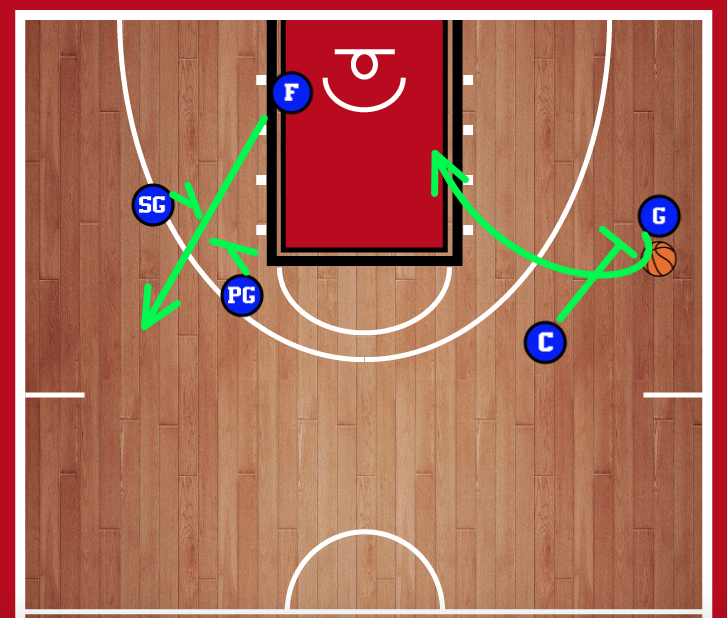
Option 4 - Pick + Roll and Flare: now back to the beginning when the center has the ball in the middle of the floor. Instead of dribbling at the wing player they can now pass the ball and execute a pick and roll. The backside movement on this option is especially dangerous. Player in the opposite corner will run out and set a flare screen on the wing players man. In this graphic PG defender will likely be paying attention to the ball screen action on the opposite side. Most likely they will be open on the flare screen for a shot or with space to drive to the rim
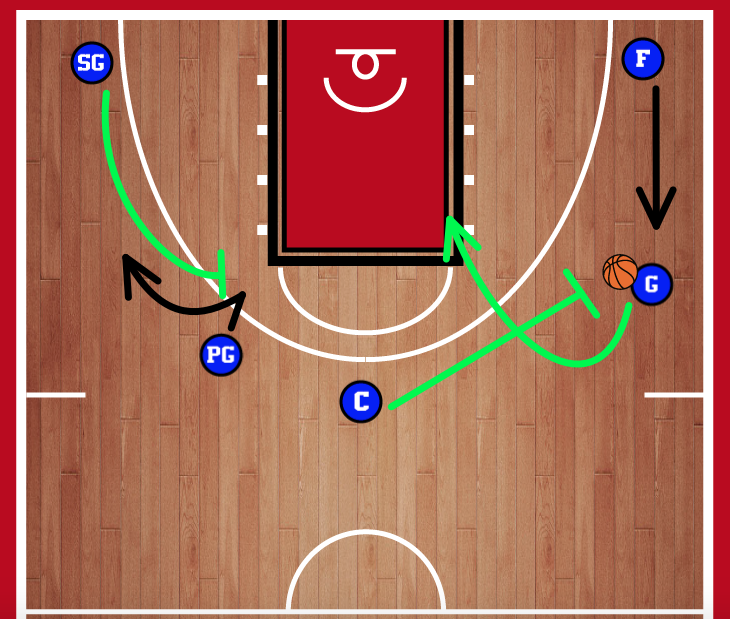



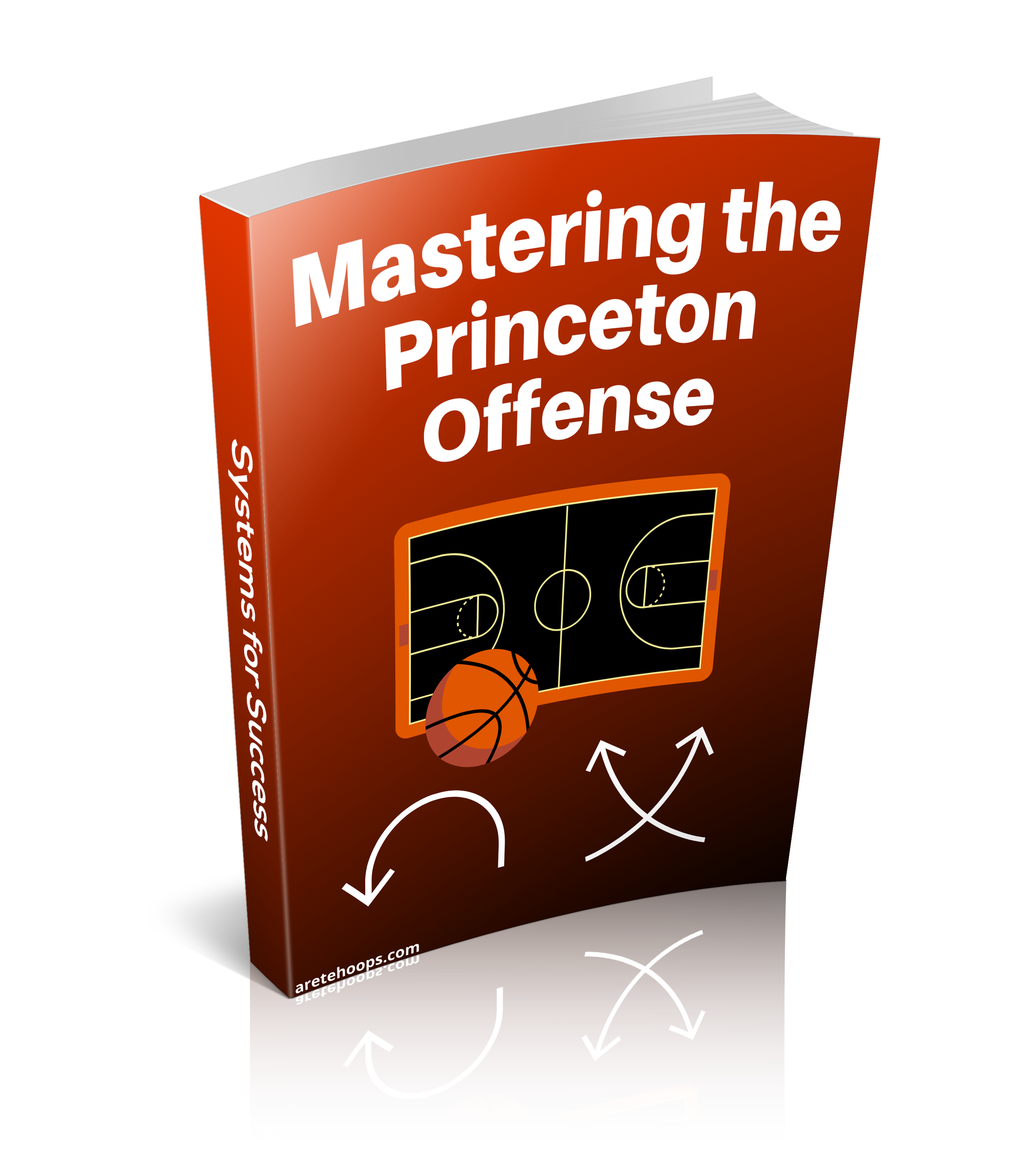
Great stuff! Thanks!
Jason! Glad you liked it. Thanks for stopping by.